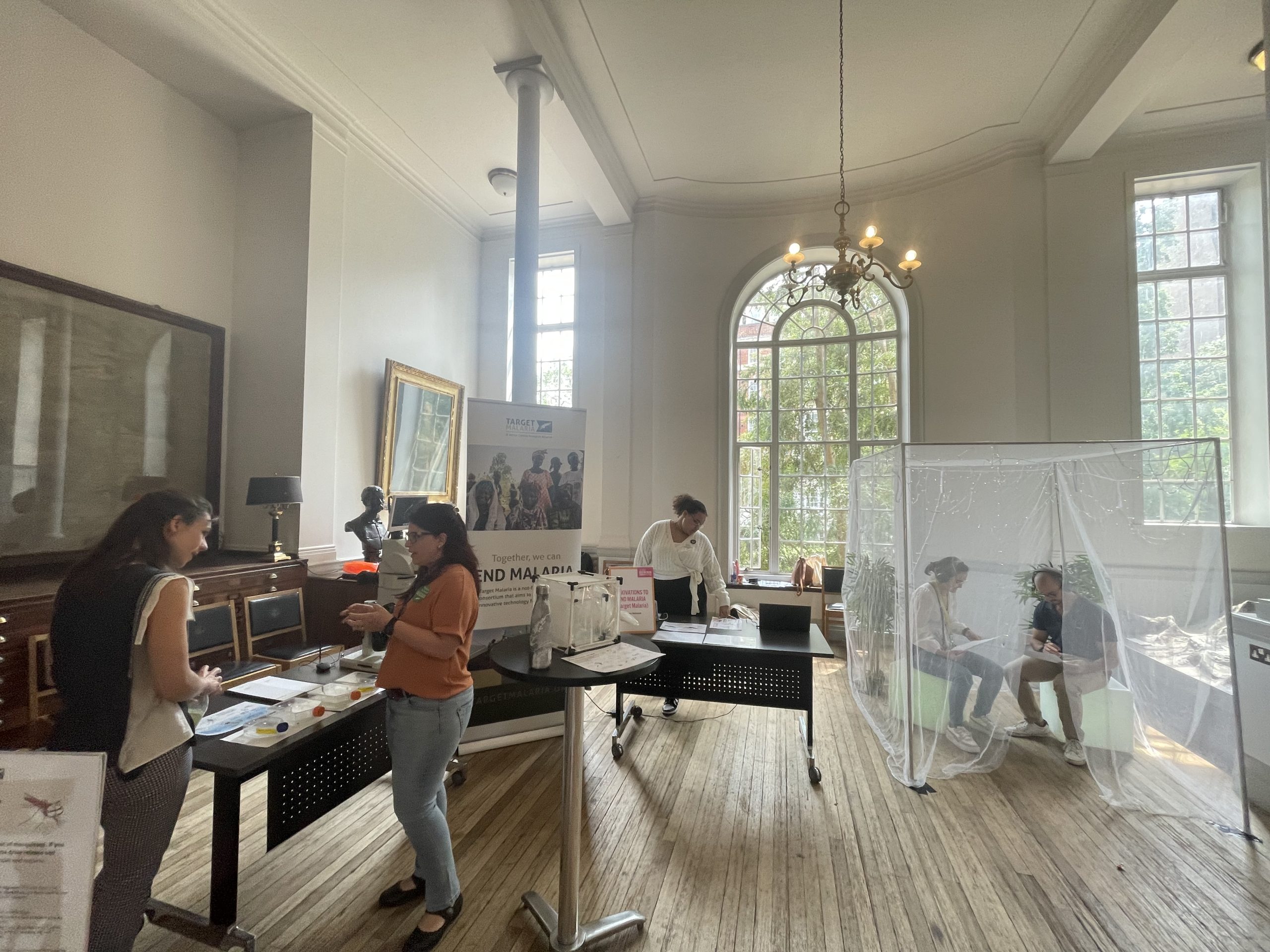By Jamie Perera, Composer & Sound Artist
Target Malaria is a not-for-profit research consortium working to develop innovative genetic technologies to reduce malaria transmission. In 2018, the Target Malaria team at Imperial College London published a landmark paper in Nature Biotechnology which demonstrated how gene drive mosquitoes could successfully suppress a population of wild-type malaria mosquitoes. Last year, the consortium partnered with London-based sound artist and composer, Jamie Perera, to transform data from the gene drive cage trials described in the paper into sound. The resulting piece, called “Swarm”, was showcased at this year’s Great Exhibition Road Festival in London. Jamie Perera tells us more about the inspiration and work that went into creating this piece in the blog below.
As a composer and a sound artist that creates works using sonification – a practice that represents objects with sound – I have partnered with Target Malaria to create “Swarm”, a two-minute-long composition, sonifying the cage trials of gene drive mosquitoes. For me, each sonification piece is an active exploration into the issues behind the objects being represented, while finding ways to create that are both responsible and engaging to audiences. Using data from a 2018 paper by Imperial College London, I developed “Swarm”, a two-minute-long composition, sonifying the cage trials of gene drive mosquitoes.

Target Malaria’s stand at this year’s Great Exhibition Road Festival, showcasing the malaria sonification piece. Photograph: Target Malaria
The cage trials tested the modification of a gene important for female fertility to reduce the population of malaria mosquitoes using gene drive technology. As demonstrated in computer models, the cage trials confirmed a rapid spread of the genetic modification, as well as an eventual targeted reduction of the malaria mosquito population.
It remains a privilege to live and travel in areas where experiences with mosquitoes are unpleasant but relatively benign; e.g. being bitten all over on a jaunt to the countryside, a silent negotiation with a still form on the ceiling, a shock out of sleep by high pitched whining next to our ears. However, in malaria-stricken areas, an experience with mosquitoes brings the threat of death, the knowledge that it is responsible for loved ones already lost, and a battle with thousands of attackers in an unshielded home.
My intention was to sonically convey the sense of threat from a swarm of malaria-carrying mosquitoes, informed by the real experience of people in places like Burkina Faso, where Target Malaria works, which diminishes over time as the population reduces. The progression of the piece leads the swarm to a state of silence, as harmonies represent a rising gene modification rate. The combined effect demonstrates the scope of the technology and hopefully expresses a sense of relief from harm.
Listen to Jamie Perera’s “Swarm” – A sonification of the 2016 cage trials by Imperial College London here.
Listen to this Imperial College podcast episode featuring a discussion between Dr. Federica Bernardini, Target Malaria and Jamie Perera on the sonification here.
Sonification details:
“Swarm” sonifies four concurrent cage trials over a number of generations, creating four sonic layers of Hatching Rate, Egg Totals and RFP% over time. The first 10 seconds are just mosquito sounds to give listeners a sense of a swarm out of control, and then the 2016 cage trials start at approximately eleven seconds into the piece. The table below shows the cage trail component to be sonified, which sound was used to represent it, and the type of sonification method used.
| Cage trial component | Sound | Sonification Type |
| Hatching rate | Mosquito swarm sample | Dynamic (gets softer as mosquito number decreases) |
| Time in days | Kick drum | Time marker, temporal, simple keeping of time (one beat per day, one rhythmic beat per generation / week) |
| Generation number (weeks) | Percussion fill, bell tree | Time marker, temporal, simple keeping of time (sounding every 7 days) |
| Egg totals | Hatching sfx sample (candy wrap sound) |
Dynamic (gets softer as egg number decreases). You hear a hatching sound at the beginning of each generation (every 7 days) |
| RFP+ % (gene modification rate) | Synth | Harmonic (pitch rises as gene modification increases) |
The world’s estimated number of malaria deaths stood at 619,000 in 2021, with 80% of all deaths in the Africa Region being children under five. My hope is that the sonification will shed light on threats to people in malaria-stricken areas, and raise awareness of gene drive technology, which if ethically managed, could be crucial for the worldwide fight against malaria.
Recent posts
